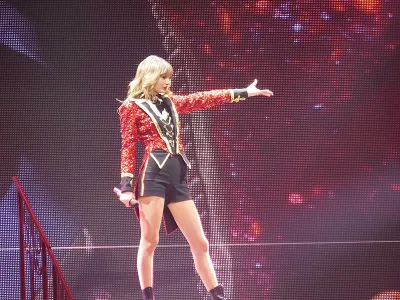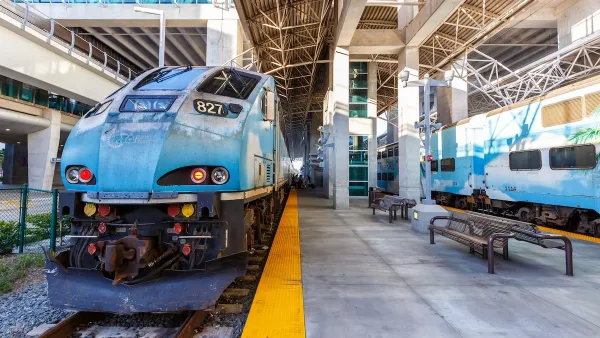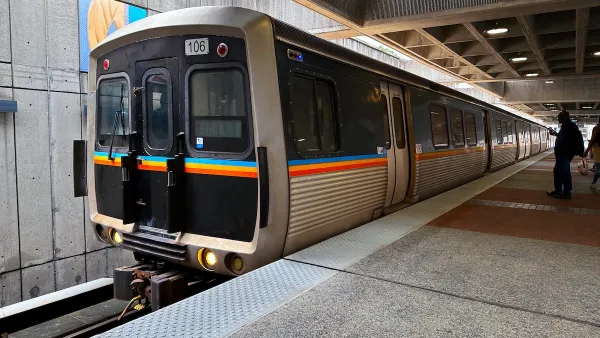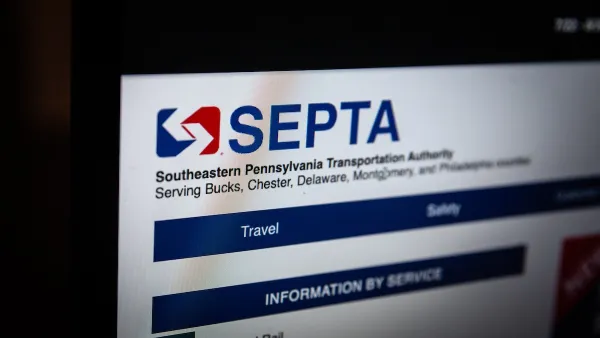Taylor Swift fans are flocking to public transit to attend her concerts, breaking ridership records in cities around the country. Will they keep using transit after the show?

Struggling transit agencies around the country are getting a much-needed boost—if Taylor Swift happens to be playing in their city, that is.
As Jared Brey reports in Governing, Atlanta’s Metropolitan Atlanta Rapid Transit Authority (MARTA) saw triple its normal ridership at the stations surrounding Swift’s concert venue on the weekend she performed. “When Swift played Philadelphia in May, SEPTA, the city's transit system, added late-night trains in its regional rail network, and counted a combined 27,000 fans entering the subway station next to Lincoln Financial Field in the hour after the shows ended.” In Boston, the city sold out of transit tickets for the night of Swift’s show before adding more capacity.
The ridership boost is useful, but do one-off events do anything to improve transit ridership long-term? “What would convert a special-occasion rider into a regular one?” For SEPTA spokesman Andrew Busch, the answer is “a great experience” that includes “everything from frequency, reliability and navigability to cleanliness, good lighting and security presence.”
To accommodate post-pandemic trends, agencies are now looking to increase frequency and service during off-peak travel hours and adapt to provide temporary boosts in service during major special events.
Ultimately, the Swiftie bump is a blip on the radar of transit ridership, but it could convert riders down the line. According to Matthew Dickens, director of policy development and research at the American Public Transportation Association, “big events are a chance to introduce new people to the transit system, and that research shows that people who first use transit when they're young are more likely to ride regularly when they're older.”
FULL STORY: Taylor Swift Fans Give Public Transit a Well-Timed Boost

Analysis: Cybertruck Fatality Rate Far Exceeds That of Ford Pinto
The Tesla Cybertruck was recalled seven times last year.

National Parks Layoffs Will Cause Communities to Lose Billions
Thousands of essential park workers were laid off this week, just before the busy spring break season.

Retro-silient?: America’s First “Eco-burb,” The Woodlands Turns 50
A master-planned community north of Houston offers lessons on green infrastructure and resilient design, but falls short of its founder’s lofty affordability and walkability goals.

Test News Post 1
This is a summary

Analysis: Cybertruck Fatality Rate Far Exceeds That of Ford Pinto
The Tesla Cybertruck was recalled seven times last year.

Test News Headline 46
Test for the image on the front page.
Urban Design for Planners 1: Software Tools
This six-course series explores essential urban design concepts using open source software and equips planners with the tools they need to participate fully in the urban design process.
Planning for Universal Design
Learn the tools for implementing Universal Design in planning regulations.
EMC Planning Group, Inc.
Planetizen
Planetizen
Mpact (formerly Rail~Volution)
Great Falls Development Authority, Inc.
HUDs Office of Policy Development and Research
NYU Wagner Graduate School of Public Service




























